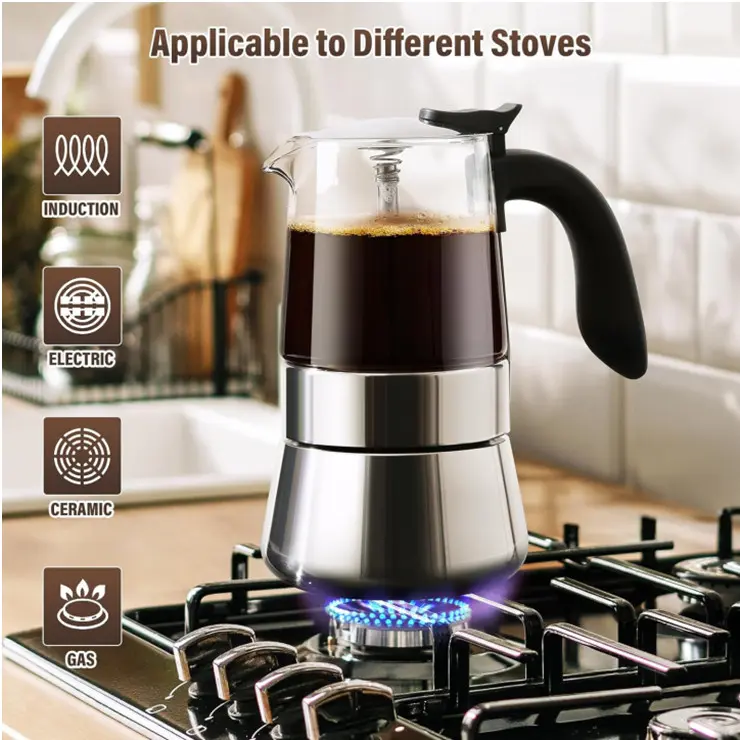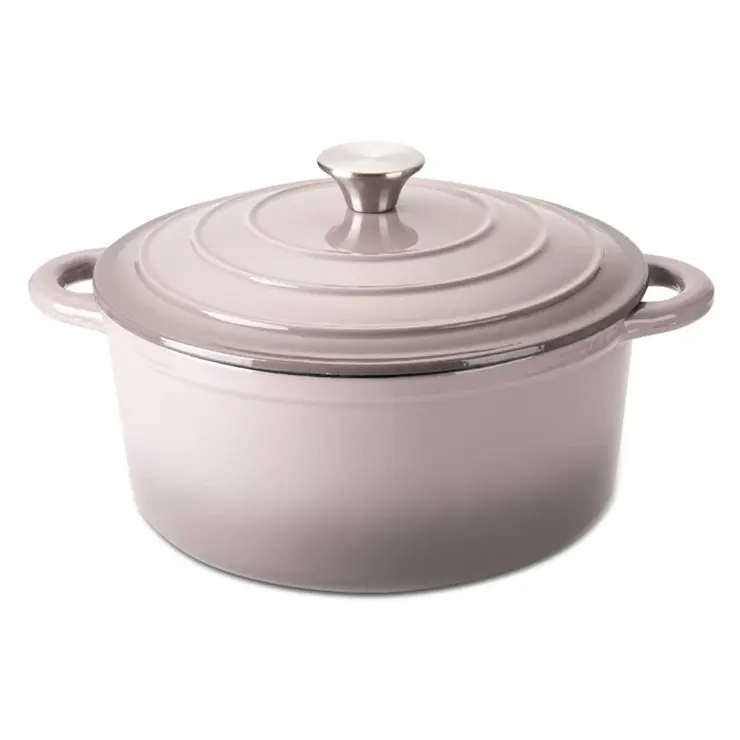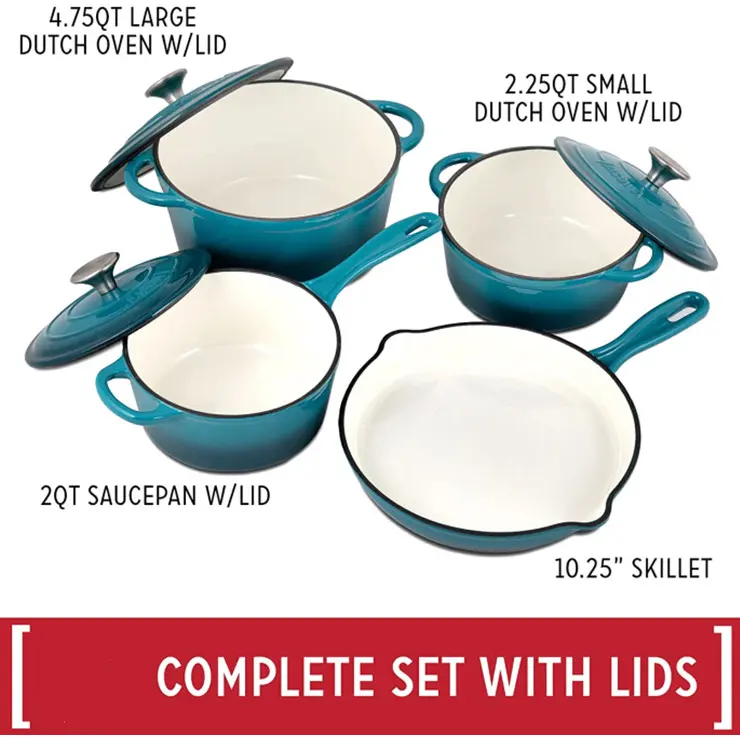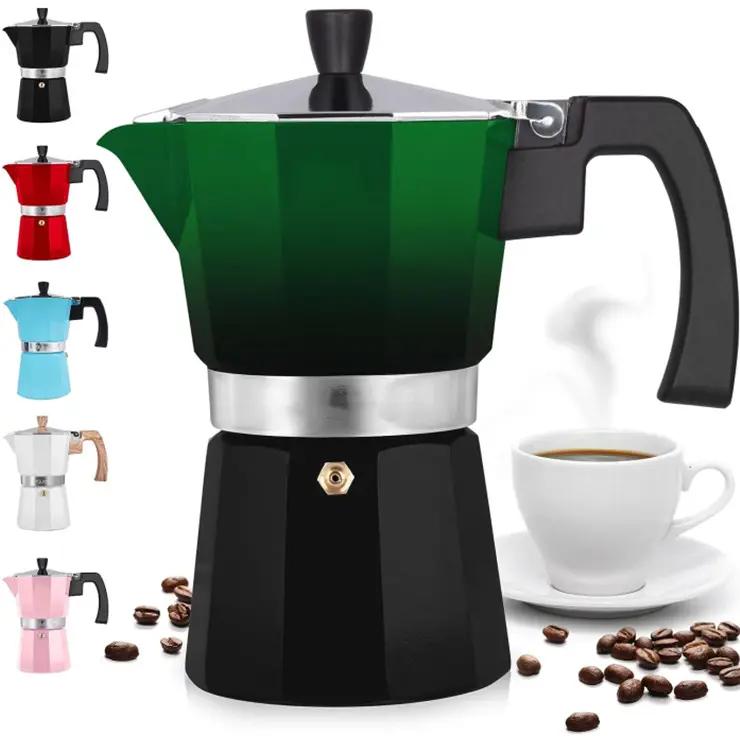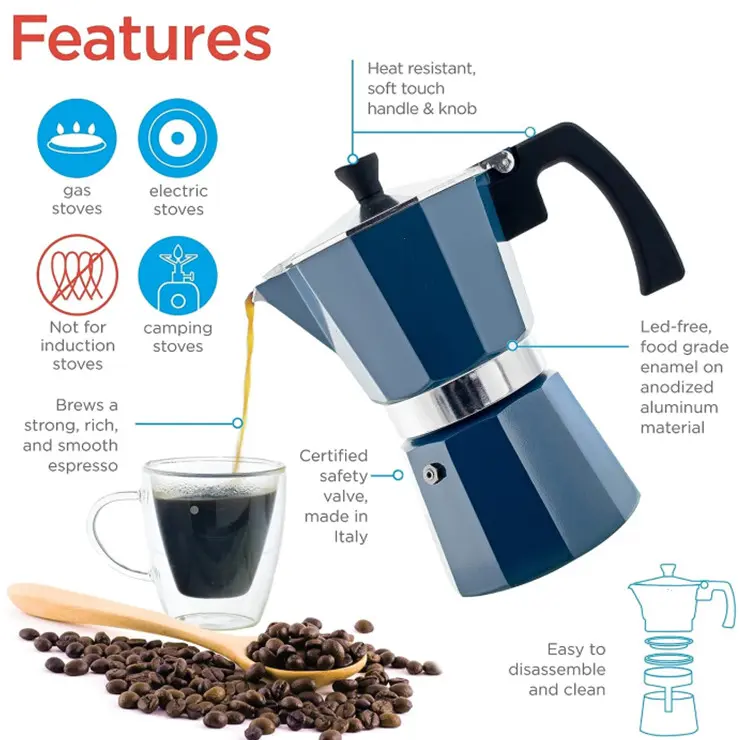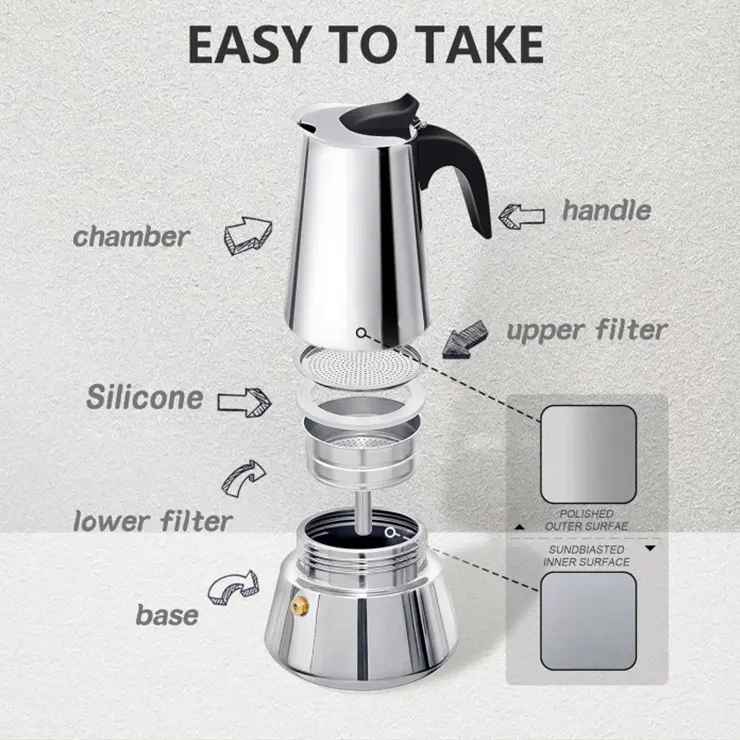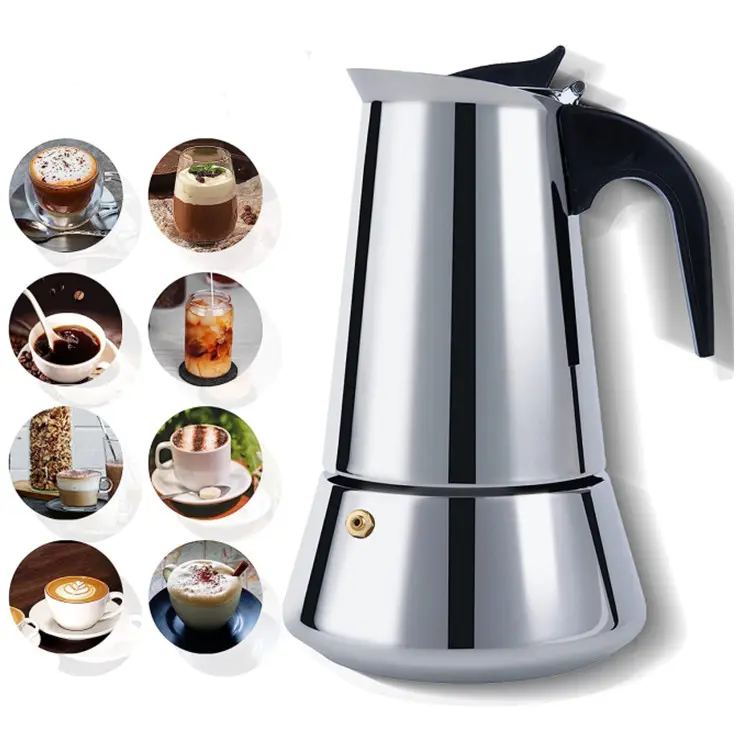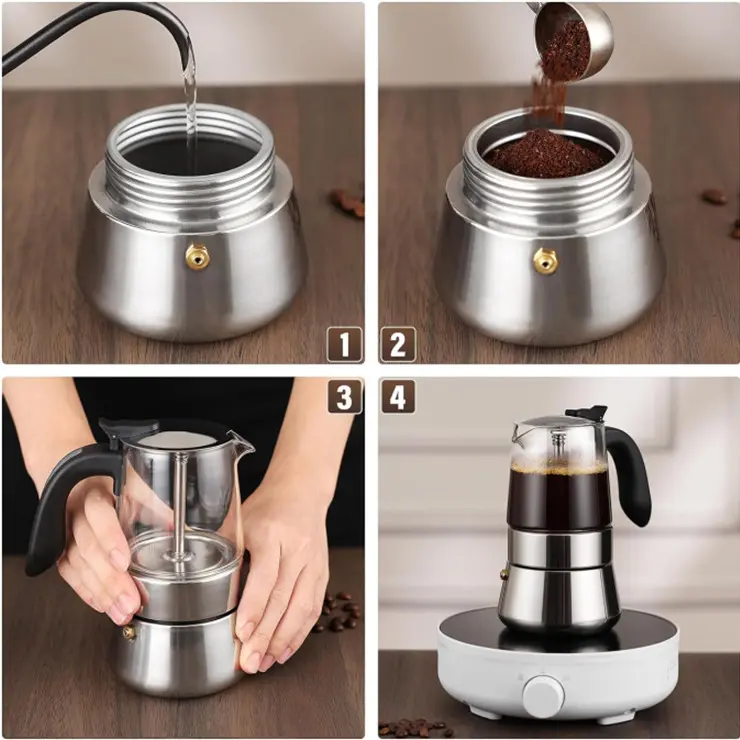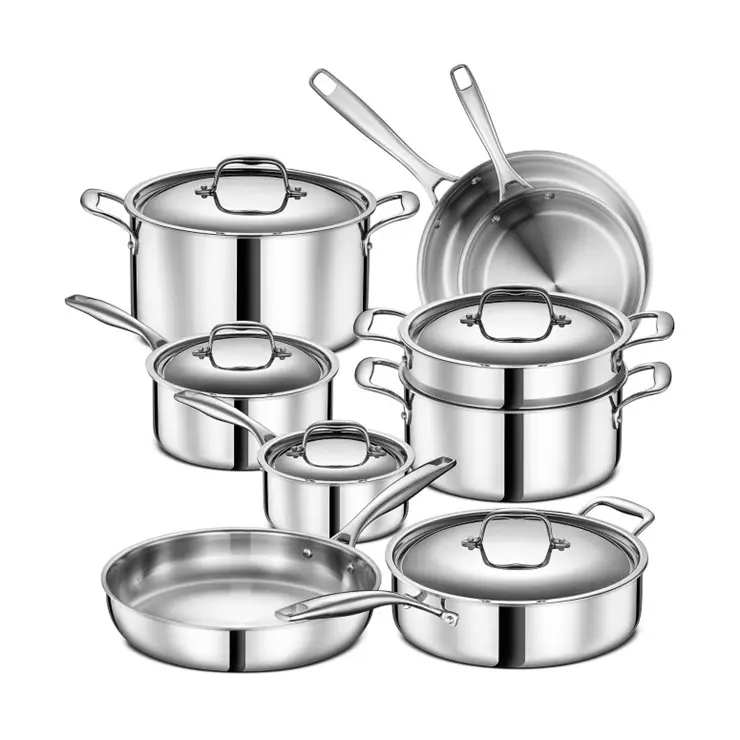Share your tips for choosing stainless steel pots
Stainless steel pots are probably the most complex in structure and have the most variety among all pots. Today, I will share my purchasing experience of stainless steel pots based on the current mainstream stainless steel pot structures. In terms of structure, it is mainly divided into composite bottom (disc base), whole pot composite to the edge (clad) and single stainless steel.
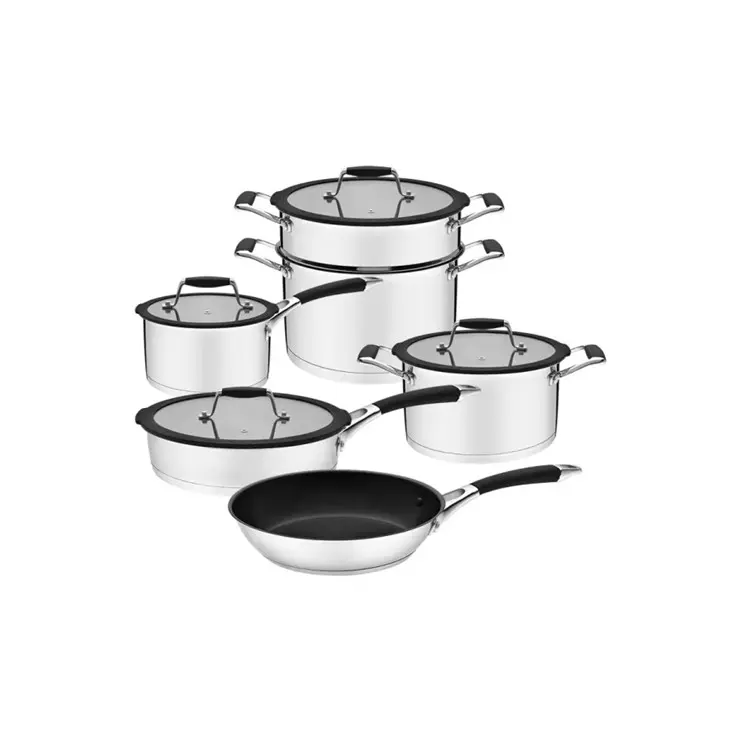
I think the specific structure to choose depends mainly on the format of the pot and the cooking method.
Generally speaking, for straight-sided pots (sauce pan, saute pan, casserole), you can choose pots with composite bottoms, because these pots have straight sides and will not cause the heat source to heat up the pot walls and cause the pot to burn. Moreover, if the pot wall is also multi-layered, the pot will be very heavy, especially the soup bucket.
For non-straight-sided pots (fry pan, saucier, wok), try to choose the whole pot composite, because the pot wall will also play a cooking role, and it is best to ensure that the pot body is heated evenly. Just imagine, the diameter of the chassis of a composite bottom wok is only 12cm, and it can only be turned on medium and small fires throughout the process. Isn’t it uncomfortable?
Considering the cooking method, you can choose composite base for boiling, and you can choose whole pot composite for frying, stir-frying, and stewing.
In terms of materials,
Composite bottom. The current mainstream is steel-aluminum steel bottom. Some high-end pots will add copper plates to ensure more even heat distribution. In terms of weight, the two are almost the same. If aluminum is used, it usually needs to be 5-7mm, while copper only needs about 2mm, but the density of copper is much greater than that of aluminum.
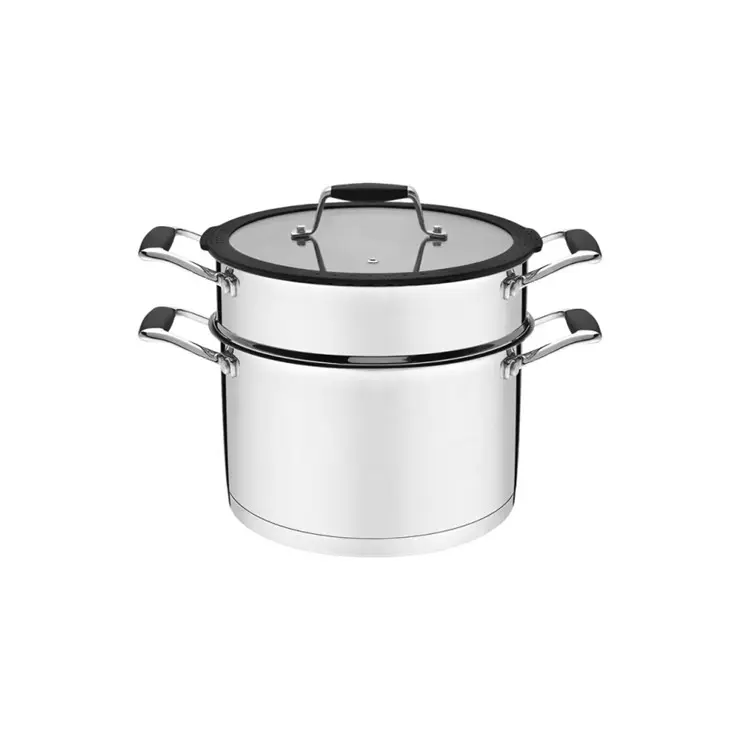
2. The whole pot is composite. There are many materials, such as steel, aluminum, steel, steel, copper, steel, aluminum, copper, and aluminum. The middle layer basically completes the task of rapid heat conduction.
Does the number of layers make sense? Yes, but the difference is not big. What needs more attention is the thickness of the pot body. The thicker the middle layer, the slower the heat conduction of the pot, the more even the heat distribution, and the better the heat storage. Choose by cooking method, choose thin for stir-frying, thick for frying or stewing.

3. Single stainless steel pots are mainly designed with different pot body thicknesses according to the format and size of the pot (such as Nakao kingdenge). There are relatively few on the market, so I won’t go into details.
For the processing technology of the stainless steel layer on the food contact surface, the material is 18/10. The handles of top brands are usually 18/10. Whether the surface is brushed, anti-stick, whether the electrochemical surface treatment can make the pot easy to clean, anti-fingerprint, anti-acidic food, etc.
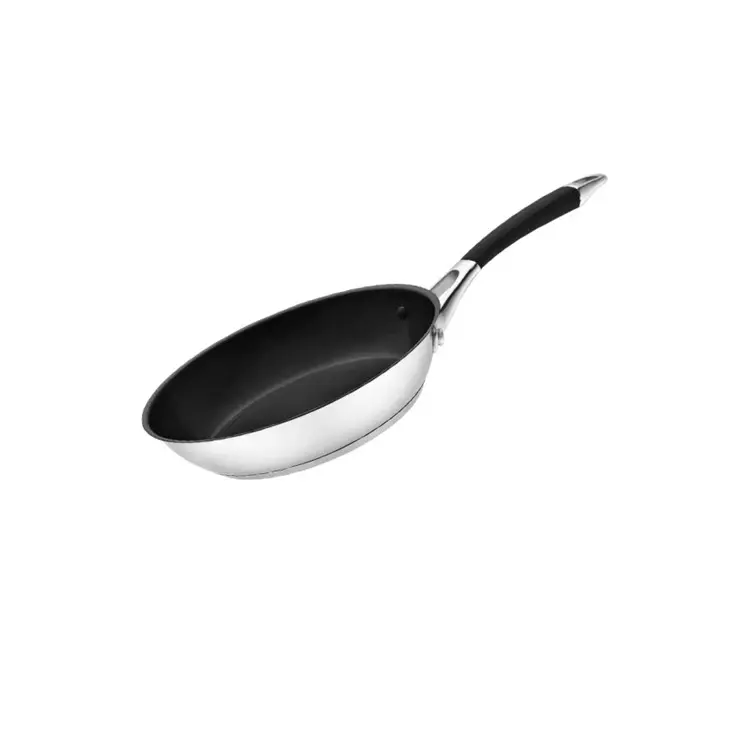
The technology of the magnetically permeable layer determines whether the induction cooker loses its magnetism when it exceeds a certain temperature and reaches an automatic constant temperature.
Other details: Does the pot have a pouring edge? Whether it has a double-layer insulated pot lid to save cooking time and the pot lid handle does not get hot, whether the pot lid is sealed, and whether it has a water-locking design.
Handle connection methods, spot welding and riveting. Nowadays, most stainless steel pots are spot welded (easy to clean and the handle does not get hot), and rivets are rarely used.
Should the handle be stamped or cast? The cast solid handle has good texture and heats up and cools down slowly. Hollow handles tend to heat up quickly and cool down quickly. Does the handle have finger supports, does the edge scratch the hand, how smooth is it polished, and is there a hanging hole at the tail.

